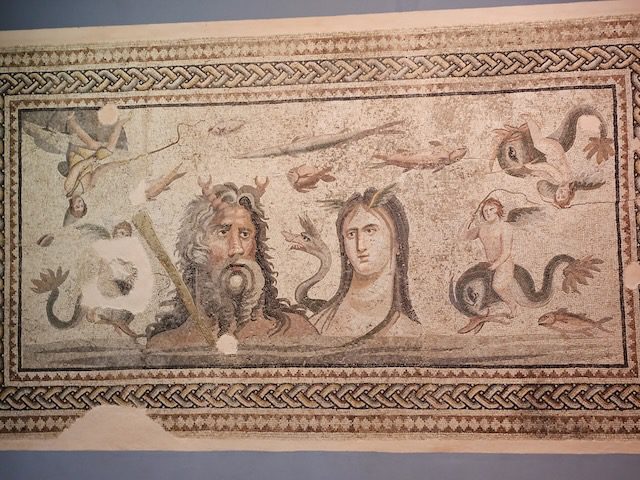The Roman elites in a colony city tended to cluster together in one part of the city, think the high rent district. In many ways, they kept to themselves, partially out of self-preservation. Overlords are often badly out number by local natives, not to mention by their slaves. 
Like at the slope houses in Ephesus, houses were built up a hill, and packed together side by side….
Sometimes, it is hard for students to imagine from the ruins what the original houses looked like (and again bearing in mind these were houses for the elites, houses which even had indoor plumbing). At this site we have marvelous clues from the following kinds of pictures—
Some of the villas had much more space, space enough for even very large floor mosaics, for instance like this one.
This city under Roman control continued to grow well into the third century, but trouble was brewing for the Empire by then, and in the 4th and 5th centuries disaster struck in terms of plagues and invaders. The Romans had simply taken over Greek mythology and gave Latin names to various of the traditional gods, just as they had taken over the Greek customs, educational practices, and language. Whole generations of Romans lived and died at Zeugma, including this loyal wife, to whom was erected a stele in her honor on the site, now in the nearby Gaziantep museum.
Notice the head covering she wore in public. There are many other mosaics at this site, some quite simple with geometric designs, some with stories to tell from mythology.
Here’s what various of these sort of smaller mosaics look like on site.
The walls of the houses were also painted, as one can see from these faded images. Below is a nice depiction of triclinium, a small dining room in a house with painted walls, or wall frescos.



































